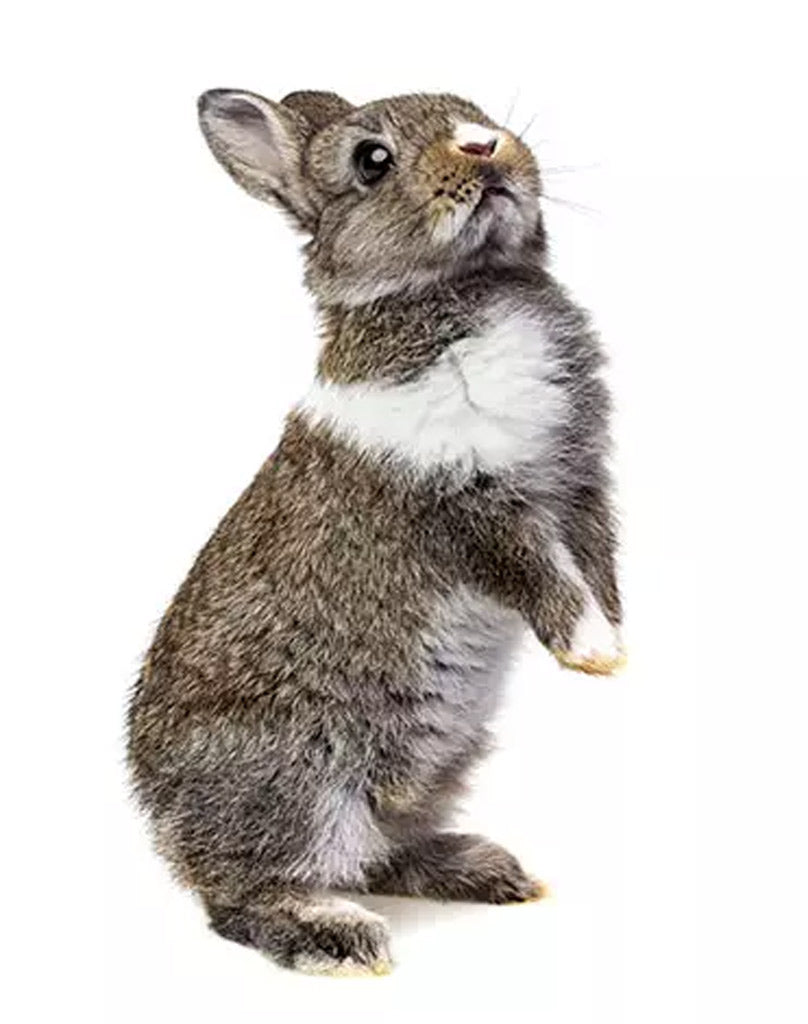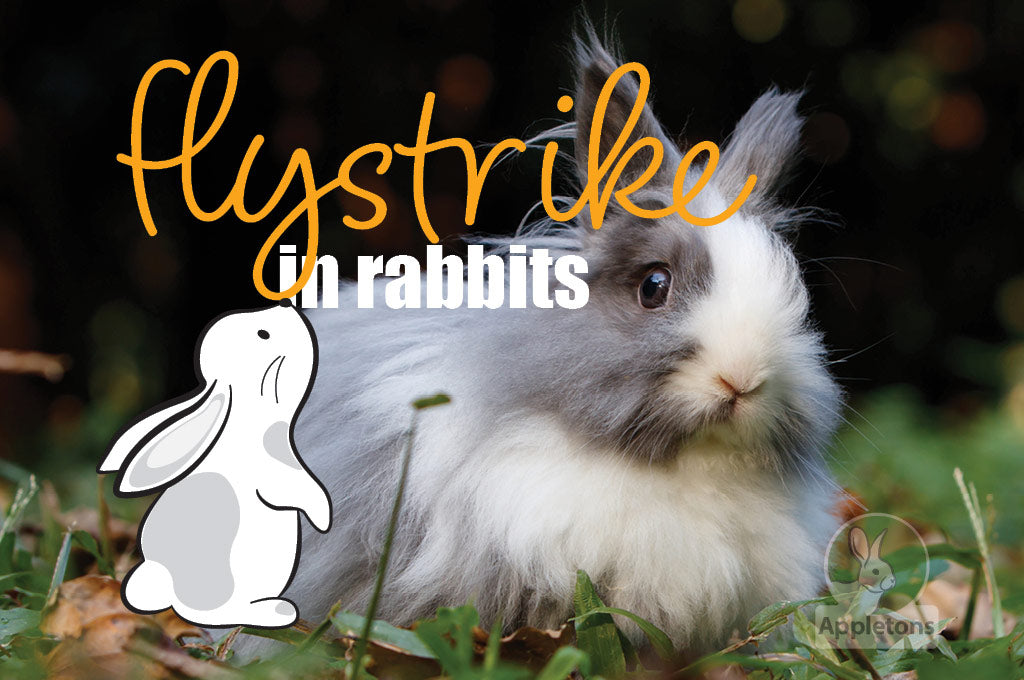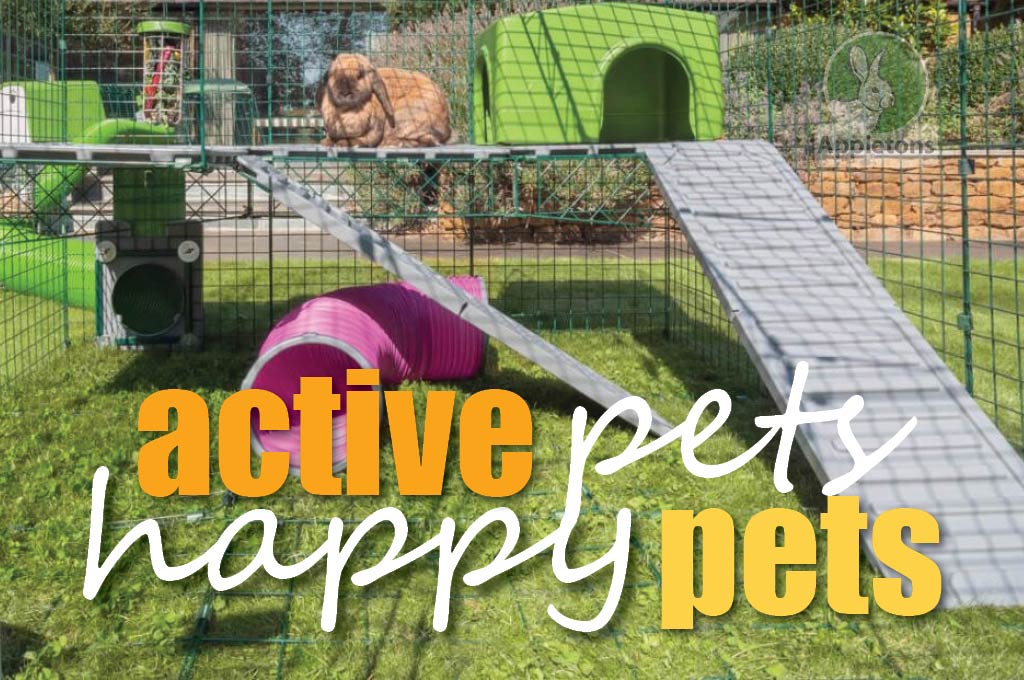How to Give Your Rabbit a Health Check 🐰
Thursday, November 28, 2019
Bunny Fitness Check
Know your Rabbit
Rabbits will most likely not show any signs of illness or pain before it is really serious, as any weakness would mark them as an easy target for predators in the wild. It is therefore important that you, as an owner, carry out regular health checks on your pet, so that you are able to spot potential problems while they are still treatable. Always take your rabbit to the vet as soon as you suspect something is not right. A rabbit’s health can deteriorate very quickly, so don’t lose any time wondering if it’s worth it or not.

1)
Body
Put a towel on your lap and place your rabbit on top of it. Stroke him or her to calm them down. When your rabbit has settled, you can start examining their body. Feel the stomach to make sure it’s not swollen or distended, and go through the rest of the body for signs of cuts, bruises or lumps. Feel the muscles in the legs, they should be strong and firm. Any wincing or unexpected movement from the rabbit could be a sign that the body part you’re touching is causing your rabbit pain. Check your rabbit’s breathing; it should not be laboured. Wheezing or clicking noises from the lungs can be signs of illness. It is worth getting a set of scales and regularly weighing your rabbit. Sudden weight loss is a serious sign of illness, and a lack of appetite is a strong indicator of poor health.

2)
Nose, Mouth & Teeth
The nose should be dry and not have any discharge. Check that the rabbit is not dribbling, and that it doesn’t have any sores or cuts around the mouth.
The gums should be pink (a red or purple colour is a sign of illness).
Make sure the teeth are not overgrown or damaged. They should also be growing straight, and be uniform. You won’t be able to see the back teeth, but if you move your fingers over the cheek you can feel for lumps, and make sure that everything is symmetrical.
Overgrown teeth are a serious problem as this can prevent your rabbit from eating, which is why it is very important to give them plenty of good quality hay to wear the teeth down.

3)
Eyes
Check your rabbits eyes to make sure they are clean and clear. You shouldn’t see any discharge or dirt. If you do, carefully pull back the eyelid to see if you notice any redness or pus in the eye; it is possible that the rabbit has scratched its eye. The eyes should also be dry; runny eyes can be a sign of teeth problems, or possibly ingrowing eyelashes or blocked tear ducts.

4)
Ears
Rabbit ears should be free from any dirt, wounds, lumps, wax, discharge or parasites. Look inside the ears; you can use a torch if it’s difficult to see. Take extra care if you have a lop rabbit as they are particularly prone to abscesses around the ears. Carefully massage the base of the ears, where lumps can sometimes occur.

5)
Feet
Watch your rabbit move around to make sure it’s not limping and doesn’t have any lameness in the legs.
Pick up your rabbit and put him or her on your lap. It’s not a good idea to put a rabbit on its back, so hold it against you with one hand under its bottom.
Try spreading the toes to check for scabs, abscesses or a build up of dirt. Also check the heels on the back feet. These should not be red or swollen. Check the fur on the feet and brush it if it’s matted.

6)
Rear End
Check the fur around the bottom. It should be completely clear from faeces or other dirt. A dirty bottom can be a sign that the rabbit’s diet is too rich and that they are not eating all the caecotrophs they produce. During summer you should check for any build up of dirt at least once a day, as a dirty bum can attract flies that lay eggs in the damp fur. This causes a condition known as flystrike, which can kill a healthy rabbit in a matter of days.
Also check the rear end for any swelling or redness.

7)
Coat
With your rabbit sat on your lap, part the hair with your fingers and check for cuts and wounds, bald patches, anything moving, small brown dots or white flakes.
Even if you don’t have a rabbit that requires grooming on a daily or weekly basis it is good to get your pet used to brushing from an early age.
Rabbits moult regularly, and you might need to help them get rid of dead hair from their coat during this time.

8)
Bunny Poop
Checking your pet rabbits’ poo is a brilliant way to see how they are doing, and from just having a little look and possibly a little feel, you will be able to tell a lot about your pet’s health. But before we start exploring the wonderful world of rabbit poo, it’s important to mention that if you’re ever worried or unsure, it’s always best to consult your vet.
Read more about poo below!

9)
Changes in Temperament
Sudden changes in temperament and behaviour is never a good sign. Maybe your rabbit doesn’t come running when you approach it with food in the morning, or is suddenly aggressive. These might be signs your rabbit is in pain. Rabbits who reach sexual maturity can sometimes act very differently. Spraying is a common problem, as is aggression. Your rabbit might not be in pain, but it can be very distressing for them to go through this ‘puberty phase’. This might be a good reason to get your pets neutered as soon as they are old enough.

Everything You Need to Know About Rabbit Poo
Different Types of Rabbit Poo
Rabbits produce two types of droppings:
1) Faecal Pellets
This is what most people think of when you say rabbit poo. They are small, round balls made up of mainly undigested hay. These droppings are relatively firm and more or less completely dry, and they don’t smell. There will be lots of these to clean up in the hutch, so take the opportunity to see if they look normal.
2) Cecotropes
These are not actually poo, but little balls of nutrition that the rabbits will pick from their bottoms and eat again. We know, not very nice, but they are a vital part of the rabbits diet, and if you see your bunny munching on these poo bits you should be comforted and proud, as it’s very important that your rabbit eats these.
Cecotropes are formed in a part of the digestive system called the caecum. After the food has gone through the small intestine, it is separated. Food matter that has been digested or doesn’t contain any nutrients will go through the large intestine and come out as pellets, whereas undigested food will be sent through the caecum.
There, plenty of healthy microorganisms and bacteria will break it down to a form that the body will actually be able to digest, and the rabbit will dispose of the cecotropes and munch away at them again.
Most of the time the rabbit will eat the cecotropes straight away. If you have a healthy rabbit with a good diet, you might not ever notice them, but they are soft and shiny black balls that sit together in a cluster, almost resembling a blackberry (sorry to ruin blackberries for you!).


Rabbit Poop Reveals All 💩
Check your rabbit’s poo regularly to see if you notice anything new or irregular. Are the faecal pellets too small, too hard or not uniform? Are the pellets strung together by hair? Are they a weird colour?
The main reason for poo-related problems is an unbalanced diet. Try changing a few things in the way you feed your rabbits, but make sure you never make any big changes too quickly.
A balanced diet for a rabbit consists of roughly 90% good quality hay, a small handful of pellets and some fresh fruit and vegetables (how much depends a bit on the size of your rabbit). He or she must also have unlimited access to fresh water at all times.
If you think something might not be right you can try changing the vegetables you give your pet. Instead of peppers and carrots, try vegetables with less sugar and more fibre, like broccoli, cabbage, spinach and other leafy greens. You might be giving your rabbit too much food, or food that is too rich.
Try limiting the amount of pellets the rabbit is given, and make sure the feed you give them has got everything they need, and a good amount of fibre. If you have long-haired rabbits it’s inevitable that they sometimes ingest some fur, which will inevitably need come out the other way.
If you see a string of pellets connected by hair every now and again it’s nothing to worry about, but if it happens several times a week, it might be a good idea to groom your rabbit more often.
Diarrhea is very serious in rabbits, especially during the warmer months of the year when flies are attracted to damp and dirty fur. They lay their eggs in the rabbit’s bottom, and when the larvae emerge they eat the rabbit’s flesh and release toxins into their bodies. This can kill a rabbit in only a few days, so if you notice your rabbit has a soggy bottom it’s important to clean it, and to check on them several times a day. If the diarrhea lasts for more than a few days it’s best to take your pet to the vet.
Rabbit Droppings Excellent for the Garden 🌱
Rabbits and gardeners are not always the best of friends, but your pet rabbits, and their droppings, will really help your plants. Unlike most other fertilizers, rabbit droppings can be spread on flower beds or veg patches straight away, as it breaks down quickly and doesn’t burn the plants or roots in the process. Rabbit manure contains 4 times more nutrients than cow or horse manure, and twice as much as chicken manure, but it doesn’t have as much nitrogen in it, which means that you don’t have to compost it if you don’t want to. Another benefit of the rabbit’s pellets is that they continue to release nutrients as they break down, and will improve the structure of the soil.

Bunny love is a very special thing. Discover the joy of keeping rabbits!




Swipe for more
